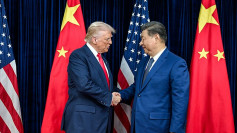Chinese manufacturing, a driving force in the nation's economy, has been hit by a collection of factors en route to slowing down. It can be called a "perfect storm" of circumstances; the US-imposed tariffs, poor weather conditions, as well as the cooling down of a hot domestic economy because of these factors has hit Chinese manufacturing hard.
The forecast by the Purchasing Managers' Index, according to ABC Australia, showed that Chinese manufacturing declined even more sharply than most analysts have predicted. Its drop from 51.5 to 51.2 is definitely caused for alarm, even if slightly; the charts actually showed a small expansion in overall manufacturing activity.
Despite the tariffs, China enjoyed a brand of economic resilience, perhaps shored up by its own economy. Export orders were not as shaky as some may have suggested. Despite the costly conditions set about by the combination of different factors, the orders were as steady as they could have hoped for in the face of the US' escalation of its costly trade war.
CNBC reports that the weakening of the Chinese manufacturing sector is actually expected. In response to the US trade tariffs, regulators have started to reduce lending in banks to control the rise of debt. Add to that the concerns from the fallout of the US-China trade dispute; exports have already started to dwindle, and July's economic decline as a result of that.
It has actually contributed less since the trade dispute started. That, however, is going to impact a lot of lives; at 1 percent contribution to the annual economic growth, China's manufacturing and exports account for millions of jobs. These millions stand to lose those jobs if these conditions continue.
Despite these concerns, however, the International Monetary Fund (IMF) predicts China's economic growth to decline only by .3 percent-from a powerful 6.9 percent last year to a still-impressive 6.6 this year. In the long run, however, China's growth will decline by 1.1 percent in 2023 to 5.5 percent.
The US shouldn't gloat on their "triumph," however. It also appears the weak economy is largely due to a weaker yuan. Domestic demand hasn't been as dominant as it had been before and, as a result, the factors combined to contribute to the decline of China's manufacturing in July. It remains to be seen when the economy will pick up, and whether it will continue.





